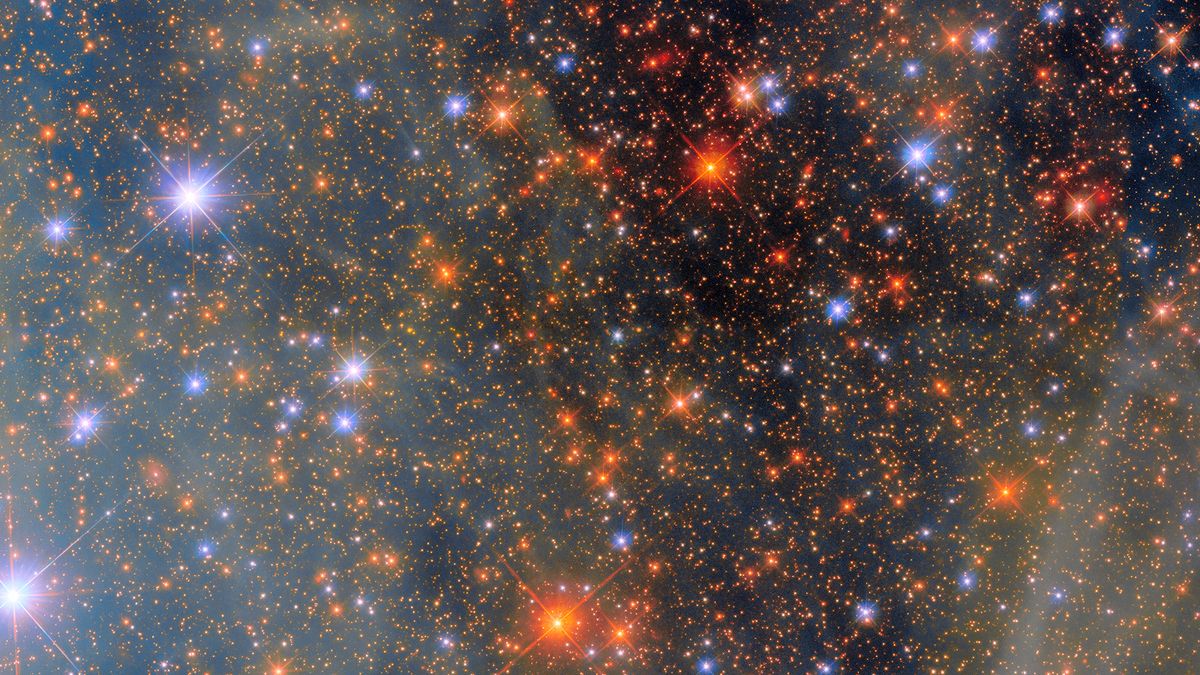What it is: The Small Magellanic Cloud, a nearby dwarf galaxy
Where it is: 200,000 light-years away, in the constellations Tucana and Hydrus
When it was shared: March 21, 2025
Why it’s so special: The Small Magellanic Cloud (SMC) is one of our galaxy’s closest neighbors and is visible to the naked eye, yet most humans will never see it. The dwarf galaxy, which contains just several hundred million stars, compared with the Milky Way’s 100 billion stars, can be seen only from the Southern Hemisphere as a cloudy patch in the night sky.
Related: ‘Bull’s-eye!’ Hubble telescope spots record-shattering 9-ring galaxy — and the cosmic ‘dart’ that smashed through its center
The SMC is close to the bigger Large Magellanic Cloud and is best seen from November to January — unless you’re the Hubble Space Telescope, which recently zoomed in on the SMC to reveal its intricate structure.
Hubble’s Wide Field Camera 3 used its four filters and the observatory’s 8-foot (2.4 meters) mirror to capture various wavelengths of light to create this colorful view of clouds of gas and dust illuminated by the light of young stars in the SMC.
The image shows the center of NGC 346, an open star cluster where new stars are born. Previous studies found about 2,500 infant stars in NGC 346 that have formed from gravitationally collapsing gas clouds. However, they have yet to become full-fledged stars.
As a star factory, the SMC fascinates astronomers because it lacks the heavier elements found in large galaxies like the Milky Way. These heavy elements are the byproducts of multiple generations of stars — something the SMC has lacked due to its small size. Dwarf galaxies like the SMC are thought of as primitive building blocks of larger galaxies. In that way, the SMC is a unique and very close example of what was happening in the early universe.
For more sublime space images, check out our Space Photo of the Week archives.
